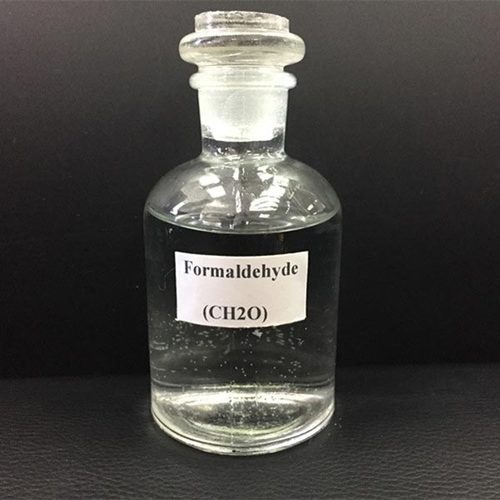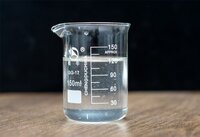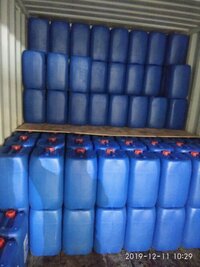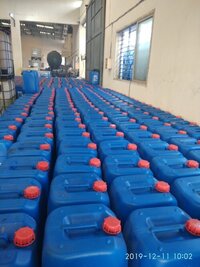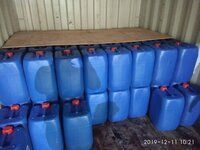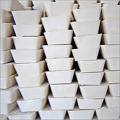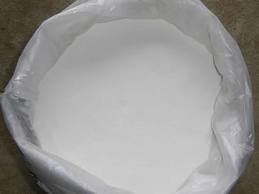Formaldehyde .
280 USD ($)/Metric Ton
Product Details:
- Solubility Water
- Purity 37%
- Ph Level 5-7
- Form Liquid
- Melting Point 92 C
- Poisonous Yes
- Density 0.8153 g/cm3 Gram per cubic centimeter(g/cm3)
- Click to View more
X
Formaldehyde . Price And Quantity
- 25 Metric Ton
- 280 USD ($)/Metric Ton
- 250.00 - 300.00 USD ($)/Metric Ton
Formaldehyde . Product Specifications
- Room Temperature
- Formaldehyde is a common precursor to more complex compounds and materials. In approximate order of decreasing consumption, products generated from formaldehyde include urea formaldehyde resin, melamine resin, phenol formaldehyde resin, polyoxymethylene plastics, 1,4-butanediol, and methylene diphenyl diisocyanate.[14] The textile industry uses formaldehyde-based resins as finishers to make fabrics crease-resistant.
- 0.8153 g/cm3 Gram per cubic centimeter(g/cm3)
- 92 C
- Liquid
- Yes
- Formaldehyde
- 37%
- Water
- Industrial
- Liquid
- Fomaldehyde
- 50-00-0
- Industrial Grade
- 5-7
Formaldehyde . Trade Information
- NHAVA SHEVA PORT
- Letter of Credit (L/C), Cash Advance (CA)
- 50 Metric Ton Per Day
- 15 Days
- Asia, Australia, Central America, North America, South America, Eastern Europe, Western Europe, Middle East, Africa
Product Description
Formaldehyde is a colourless, pungent gas that finds widespread use across a range of sectors and uses. It has the chemical formula CH2O and is a straightforward organic molecule. Following are some crucial details concerning formaldehyde: 1. Formaldehyde is used in a wide range of industrial processes, including: a. It is an essential component in the manufacture of resins such as urea-formaldehyde resins, phenol-formaldehyde resins, and melamine-formaldehyde resins. Plywood, particleboard, laminates, and other wood-based goods are all made using these resins.b. Chemical Intermediates: The synthesis of many compounds, including solvents, polymers, textiles, dyes, and medications, uses formaldehyde as a precursor.c. Biocide and disinfectant: Formaldehyde is a disinfectant and preservative that is used in mortuaries, medical labs, and some consumer goods.d. Embalming: To preserve cadavers for anatomical research or funerals, it is used in the embalming procedure.e. Textile Industry: Resins based on formaldehyde are used to treat fabrics and apparel to prevent wrinkles.2. Health Effects: The National Toxicology Programme (NTP) and the International Agency for Research on Cancer (IARC) both classify formaldehyde as a human carcinogen. Long-term exposure to formaldehyde can irritate the respiratory system, the eyes, the skin, and even trigger allergic reactions. Additionally, certain cancers and respiratory conditions may be facilitated by it.3. Regulations and Safety Measures: To safeguard public health and the environment, many nations have put restrictions on formaldehyde emissions and exposure levels in a variety of products, including consumer goods and wood-based materials. In fields where formaldehyde is employed, proper ventilation, PPE use, and safe handling procedures are crucial.4. Formaldehyde can be released indoors from a number of things, including building supplies, furniture, carpets, and consumer goods. When formaldehyde levels are high indoors, it can cause "sick building syndrome" and have a negative impact on peoples health. As a result, its critical to maintain adequate ventilation and lower formaldehyde emissions from indoor sources.5. Alternatives and mitigation: Work is being done to lessen formaldehyde emissions and create safer substitutes. For instance, low- or no-formaldehyde resins and adhesives are utilised in the manufacture of wood products, and alternative wrinkle-resistant methods are being investigated in the textile sector.When working with formaldehyde, it is crucial to adhere to safety rules, guidelines, and best practises to reduce exposure and mitigate any potential health concerns.Technical DetailsFAQs of Formaldehyde .:
Q: What is the purity level of Formaldehyde?
A: The purity level of Formaldehyde is 37%.Q: What is the grade classification for Formaldehyde?
A: Formaldehyde is classified as Industrial Grade.Q: What is the recommended storage condition for Formaldehyde?
A: Formaldehyde should be stored at room temperature.Q: What is the density of Formaldehyde?
A: The density of Formaldehyde is 0.8153 g/cm.Q: Is Formaldehyde soluble in water?
A: Yes, Formaldehyde is soluble in water.Q: What is the melting point of Formaldehyde?
A: The melting point of Formaldehyde is approximately -92C.Q: What are the common applications of Formaldehyde?
A: Formaldehyde is a precursor to various compounds and materials, including urea formaldehyde resin, melamine resin, phenol formaldehyde resin, polyoxymethylene plastics, 1,4-butanediol, and methylene diphenyl diisocyanate. It is also used in the textile industry as a finisher to make fabrics crease-resistant.Tell us about your requirement

Price:
Quantity
Select Unit
- 50
- 100
- 200
- 250
- 500
- 1000+
Additional detail
Mobile number
Email
Other Products in 'Industrial Chemicals' category
 |
RADHE ENTERPRISE
All Rights Reserved.(Terms of Use) Developed and Managed by Infocom Network Private Limited. |



 English
English Spanish
Spanish French
French German
German Italian
Italian Chinese (Simplified)
Chinese (Simplified) Japanese
Japanese Korean
Korean Arabic
Arabic Portuguese
Portuguese